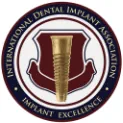Blog
Oral Cancer Exam
According to research conducted by the American Cancer Society, more than 30,000 cases of oral cancer are diagnosed each year. More than 7,000 of these cases result in the death of the patient. The good news is that oral cancer can easily be diagnosed with an annual oral cancer exam, and effectively treated when caught in its earliest stages.
Oral cancer is a pathologic process which begins with an asymptomatic stage during which the usual cancer signs may not be readily noticeable. This makes the oral cancer examinations performed by the dentist critically important. Oral cancers can be of varied histologic types such as teratoma, adenocarcinoma and melanoma. The most common type of oral cancer is the malignant squamous cell carcinoma. This oral cancer type usually originates in lip and mouth tissues.
There are many different places in the oral cavity and maxillofacial region in which oral cancers commonly occur, including:
-
Lips
-
Mouth
-
Tongue
-
Salivary Glands
-
Oropharyngeal Region (throat)
-
Gums
-
Face
Reasons for oral cancer examinations
It is important to note that around 75 percent of oral cancers are linked with modifiable behaviors such as smoking, tobacco use and excessive alcohol consumption. Your dentist can provide literature and education on making lifestyle changes and smoking cessation.
When oral cancer is diagnosed in its earliest stages, treatment is generally very effective. Any noticeable abnormalities in the tongue, gums, mouth or surrounding area should be evaluated by a health professional as quickly as possible. During the oral cancer exam, the dentist and dental hygienist will be scrutinizing the maxillofacial and oral regions carefully for signs of pathologic changes.
The following signs will be investigated during a routine oral cancer exam:
-
Red patches and sores – Red patches on the floor of the mouth, the front and sides of the tongue, white or pink patches which fail to heal and slow healing sores that bleed easily can be indicative of pathologic (cancerous) changes.
-
Leukoplakia – This is a hardened white or gray, slightly raised lesion that can appear anywhere inside the mouth. Leukoplakia can be cancerous, or may become cancerous if treatment is not sought.
-
Lumps – Soreness, lumps or the general thickening of tissue anywhere in the throat or mouth can signal pathological problems.
Oral cancer exams, diagnosis and treatment
The oral cancer examination is a completely painless process. During the visual part of the examination, the dentist will look for abnormality and feel the face, glands and neck for unusual bumps. Lasers which can highlight pathologic changes are also a wonderful tool for oral cancer checks. The laser can “look” below the surface for abnormal signs and lesions which would be invisible to the naked eye.
If abnormalities, lesions, leukoplakia or lumps are apparent, the dentist will implement a diagnostic impression and treatment plan. In the event that the initial treatment plan is ineffective, a biopsy of the area will be performed. The biopsy includes a clinical evaluation which will identify the precise stage and grade of the oral lesion.
Oral cancer is deemed to be present when the basement membrane of the epithelium has been broken. Malignant types of cancer can readily spread to other places in the oral and maxillofacial regions, posing additional secondary threats. Treatment methods vary according to the precise diagnosis, but may include excision, radiation therapy and chemotherapy.
During bi-annual check-ups, the dentist and hygienist will thoroughly look for changes and lesions in the mouth, but a dedicated comprehensive oral cancer screening should be performed at least once each year.
If you have any questions or concerns about oral cancer, please contact our practice.
Dental procedures have improved remarkably over the past few decades. Modern remedies are faster, mo...
Baby teeth perform an essential role in the development of adult teeth. If your toddle develops toot...
You probably know you should visit your dentist every six months for a cleaning, but did you realize...
Although eyes are considered windows to the soul, your smile can reflect how much you value yourself...
Dental implants are growing in popularity every year and many are requesting them over traditional d...
Orthodontic care is a crucial part of maintaining the health, beauty, and function of your smile. Be...
The chances are high that your dentist or dental hygienist has been pushing you to floss daily every...
When looking in the mirror, does your smile give you confidence? Is your smile healthy, but you stil...
Everyone loves to have a radiant smile, but that doesn’t always happen naturally. If you lack ...
Dental emergencies can occur at any time, and whether your child has broken a tooth playing sports ...





